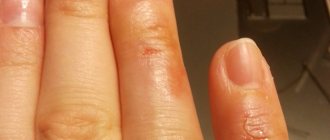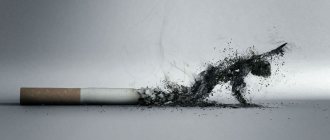Eustachitis is a disease of the Eustachian tube, which results in impaired ventilation in the middle ear.
The pathology is directly related to the problems of the eardrum and occurs as a result of the inflammatory process of the mucous membrane of the nasopharynx, which manifests itself against the background of pharyngitis, runny nose and adenoids. When swelling of the mucous membranes begins, the auditory tube narrows and may even become completely blocked, which leads to negative pressure that causes the eardrum to retract. As a result, short-term congestion appears in the ear, the level of hearing decreases, and although short-term, painful sensations and noise appear. In very young children, bilateral eustachitis can also develop.
What it is?
Eustachitis is a widespread ear disease. It occurs as a result of inflammation of the eustachian passage - the middle ear. It is necessary for a person to catch sounds well. Its size is only 2 mm, so any inflammation provokes its overlap and hearing problems.
Thus, with a prolonged inflammatory process, otitis media develops. It can appear at any age. As a rule, these are consequences of an infectious disease.
How does the disease manifest in children?
The anatomy of a child's ear canal is very different from that of an adult. Therefore, the child is more prone to ear diseases. The signs of eustachitis in childhood are exactly the same as in adults. The following symptoms are noted:
- presence of noise;
- nasal congestion;
- hearing loss.
What to do if inflammation occurs in an area such as the Eustachian tube? Treatment at home is not recommended. You should consult a specialist.
General information
The Eustachian tube is a canal whose diameter does not exceed 2 mm. The canal connects the tympanic cavity and the nasopharynx and serves to equalize atmospheric pressure and pressure inside the ear. This ensures normal operation of the sound-conducting apparatus.
Since the size of the auditory tube is very small, even slight swelling of the mucous membrane lining the Eustachian tube leads to disruption of the canal and the development of eustachitis. Stopping the flow of air from the pharynx into the middle ear cavity contributes to the development of inflammation that affects the auditory tube and middle ear.
According to the nature of the course, the inflammatory process can be acute and chronic; according to the localization of inflammation, unilateral and bilateral eustachitis is distinguished.
Traditional treatment
To treat eustachitis, you can use some traditional methods of treatment.
Herbal infusions
To prepare healing infusions to treat inflammation, you can use various herbs:
- chamomile;
- calendula;
- oak bark
To obtain an effective medicine, pour two tablespoons of plant material into 235 ml of boiling water. This mixture is left for 2 hours, then filtered. The resulting infusion is instilled into the nostril or ear several times a day. These plants have pronounced antiseptic properties, so they will help quickly cope with inflammation.
Aloe and agave juice
For treatment, you can use one component or a mixture of them, which are diluted in a small amount of water. The medicine is used for nasal instillation or ear rinsing. This procedure is repeated several times a day until the inflammation disappears.
Potato
Boiled potatoes have long been used to treat colds. It can also be used to treat inflammation localized in the Eustachian tube. To do this, boil the potatoes, then breathe over their steam, covered with a towel.
Onion
Onions are chopped, wrapped in gauze and inserted into the problem ear for 10 minutes. This procedure is repeated daily until relief occurs.
Garlic
A few cloves of garlic are crushed and poured with vegetable oil. This mixture is infused for 2 weeks. An antiseptic infusion is instilled into the ears and nose to get rid of inflammation.
Causes
The disease in question can occur for a variety of reasons, but most often doctors diagnose eustachitis as a complication of certain pathologies:
- neoplasms of the nasopharyngeal cavity;
- hypertrophy of the nasal concha;
- curvature of the nasal septum.
- fungal infection - the cause of eustachitis can be the contact of pathogens of tuberculosis, chlamydia, syphilis and other nonspecific microflora on the mucous membrane of the Eustachian tube;
- acute respiratory viral infection - viruses and pathogenic bacteria penetrate from the nasopharynx into the auditory tube and beyond;
- allergic reactions - often manifests itself against the background of allergic rhinitis (runny nose) and polyposis;
- pathologies of the nasopharynx that occur in a chronic form - for example, tonsillitis, pharyngitis, adenoiditis, sinusitis;
In addition to clearly defined reasons for the development of tubo-otitis, doctors also identify several predisposing factors:
- improper cleansing of mucus from the nasal cavities during a prolonged runny nose, when a person begins to blow his nose simultaneously with both nasal passages;
- long-term coughing and sneezing - with these actions, the pressure in the tympanic cavity increases sharply, the ventilation of the auditory tube worsens;
- low level of immunity in chronic diseases - for example, diabetes mellitus or common vitamin deficiency.
In medical practice, it has happened to diagnose eustachitis, the cause of which was sudden changes in atmospheric pressure - the entrance to the auditory tube is compressed, which leads to damage to the structures of the middle ear.
Cost of treatment
| Name | Cost, rub. | |
| 1 | Initial appointment with a doctor, doctor of medical sciences | 2400 |
| 2 | Procedures included as prescribed by a doctor: | |
| UZIS | 2000 | |
| Ozone ultraviolet sanitation | 350 | |
| Laser photoreactive therapy | 1600-2400 | |
| Application of a microcompress into the nasal cavity | 600 | |
| Application of gum-propolis suspension to mucous membranes | 500 | |
| 3 | Final examination by a doctor based on the results of treatment | for free |
Development mechanism
Complete or partial disruption of the patency of the auditory tube during eustachitis leads to a reduced flow of air into the tympanic cavity or to a complete cessation of its ventilation. In this case, the air remaining in the tympanic cavity is gradually sucked in, the pressure in it decreases, which is manifested by the retraction of the eardrum.
Low pressure leads to the leakage of transudate containing protein and fibrin into the tympanic cavity, and in later stages, lymphocytes and neutrophils - cells involved in inflammatory reactions. The catarrhal form of otitis media develops.
Long-term impairment of ventilation of the tympanic cavity caused by eustachitis, especially in people with weakened immune systems, can cause the transition of catarrhal inflammation to purulent inflammation, as well as the development of adhesions with the occurrence of adhesive otitis media.
Varieties of eustachitis
Inflammation of the Eustachian tube can occur in different ways, on the basis of which several forms of the disease are distinguished:
- catarrhal Can transform into purulent otitis media and be accompanied by the formation of adhesions;
- granulation. Accompanied by the formation of connective tissue in the affected area;
- cicatricial. Provokes scarring of inflamed tissues;
- atrophic. Accompanied by the formation of necrosis zones;
- vasomotor. Accompanied by a violation of the tone of blood vessels.
Also, the inflammatory process can be unilateral or bilateral.
Symptoms of eustachitis
In general, the patient may complain of:
- feeling of stuffiness and noise (crackling) in the ear;
- hearing impairment;
- autophony (increased perception of one's own voice);
- sensation of fluid transfusion in the ear;
- frequent acute purulent otitis media.
Retraction of the tympanic membrane, shortening or complete disappearance of the light reflex, and protrusion of the short process of the malleus are observed. The mobility of the eardrum is limited. With the restoration of the function of the auditory tube, the symptoms of acute tubo-otitis gradually disappear.
Symptoms of tubootitis
Since eustachitis can occur in two different forms, the symptoms will vary.
Symptoms of acute eustachitis
Most often, this form of the disease in question is diagnosed against the background of influenza or acute respiratory viral infections, in which there is nasopharyngeal congestion. Signs of acute eustachitis are:
- congestion of the ear (or ears, if the bilateral inflammatory process progresses);
- autophony – a condition in which the patient hears his own speech in the form of an echo in the ears;
- constant or periodic presence of tinnitus;
- feeling of the presence of water in the sore ear - “as if the liquid is overflowing” when tilting or turning the head;
- headache from the problematic ear.
The acute form of the disease in question is never accompanied by fever or intense pain in the ear/ears - the person feels within normal limits. If treatment for acute eustachitis is started in a timely manner, then the doctors’ prognosis is favorable - the therapy does not last long, no consequences are observed. Otherwise, the inflammatory process in question in the auditory tube becomes chronic - it is less treatable and is fraught with hearing impairment.
Symptoms of chronic eustachitis
The chronic form of the disease in question is characterized by deformation of the eardrum and cavity - atrophic changes occur in their structure. When examining the patient, the doctor will note clouding of the eardrum and the following signs:
- the eardrum becomes deformed and retracts;
- some areas become red (they are clearly limited);
- hearing is impaired.
The patient will complain of a decrease in the level of sound perception, periodic congestion in the ear/ears, and a feeling of heaviness in the head (from the affected ear).
It is worth noting that eustachitis in children develops according to the same principle as in adults - tinnitus, congestion and some hearing loss are not accompanied by a deterioration in general well-being (fever, drowsiness, headaches, and so on). The child may indicate that excellent audibility returns to him when sneezing, after deep yawning and coughing.
Chronic form
Exacerbation of chronic eustachitis differs slightly in symptoms from the acute form of the disease; only the increasing loss of hearing acuity is noticeable.
In rare cases, headache and slight fever may occur. Ear pain, dizziness and high temperature may appear if otitis media occurs against the background of eustachitis.
At the same time, after examining a doctor, you can know exactly the form of the disease - chronic eustachitis gives specific signs. These include retraction of the eardrum, the appearance of redness and narrowing of the lumen of the auditory tube.
Complications
Tubootitis can lead to complications. The most significant:
- transition of the inflammatory process to the inner ear with impaired coordination of movements, dizziness, unsteadiness in gait, decreased concentration;
- inflammation of the mastoid process, which is located behind the ear (mastoiditis), which is manifested by acute pain in the temporal bone, swelling and redness behind the ear;
- meningitis (inflammation of the membranes of the brain) is an extremely dangerous disease with an increase in body temperature to more than 40°C, severe headaches, and loss of consciousness.
Diagnostics
In the case of tubo-otitis, the medical history is characterized by the presence of one or more of the following points (causes of tubo-otitis):
- ARVI, measles, scarlet fever, whooping cough, diphtheria;
- inflammation of the upper respiratory tract (rhinitis, nasopharyngitis);
- incorrect blowing of the nose (both halves of the nose at once);
- adenoids (in children);
- deviated nasal septum;
- polyps.
The diagnosis is established on the basis of anamnesis, clinical picture, results of otoscopy, audiometry, as well as data from a study of the function of the auditory tube. For this purpose, increased air pressure is created in the area of the pharyngeal opening of the auditory tube and its passage into the tympanic cavity is controlled. The patient himself can increase the pressure by making frequent swallowing movements or exhaling sharply through the nose with the wings of the nose pressed against the nasal septum (Valsalva experience).
It is possible to artificially increase pressure when blowing the ear with a Politzer balloon. Also, doctors must identify what type of tubo-otitis is, infectious or allergenic. To do this, nasal swabs are taken, and after two weeks the doctor identifies the cause of the disease. It is worth noting that allergenic tubo-otitis takes longer to cure than infectious
How does the chronic course of the disease manifest?
If in the acute form all the symptoms are temporary and after a while they cease to bother you, then in the chronic form they are persistent. The chronic disease is characterized by atrophy in the area of the mucous membrane of the eardrum and membrane. The membrane becomes cloudy and necrosis may form.
In a chronic course, the eardrum is retracted and deformed, the lumen of the tube narrows, hearing is significantly impaired, and some local areas turn red. Sclerosis of the tympanic membrane is noted. Inflammation can be complicated by adhesive otitis media, which provokes the formation of adhesions that disrupt the patency of the Eustachian tube and ossicles in the ear.
Treatment of eustachitis
Most people who are faced with this disease do not know how to treat eustachitis at home. Therapeutic measures for eustachitis are aimed at relieving swelling, sanitizing the nasopharynx, and stopping an allergic reaction or inflammation. For eustachitis, to reduce swelling of the auditory tube, antihistamines for oral administration (suprastin, claritin, desloratadine) and vasoconstrictor nasal drops (nazol, nazivin, tizin, vibrocil, sanorin) are prescribed.
- To improve the patency of the auditory tube, it is necessary to catheterize it, followed by the administration of a solution of adrenaline or hydrocartisone. For eustachitis, pneumomassage of the eardrum has a good effect. In case of formation of transudate of the tympanic cavity, the introduction of proteolytic enzymes is used to liquefy it. The manipulation itself is carried out through the auditory tube by catheterization.
- In the acute period of eustachitis, it is not recommended to carry out Politzer blowing. The fact is that infected mucus can enter the middle ear cavity from the pharynx through the auditory tube. Complex treatment of eustachitis includes various physiotherapeutic techniques - microwave therapy, UHF, laser therapy, electrical muscle stimulation, ultraviolet radiation.
In the process of treating eustachitis, it is imperative to eliminate the causes of its occurrence. If necessary, removal of adenoids, systemic antibiotic therapy, removal of a benign tumor of the pharynx and nose, etc. are carried out.
Treatment of tubootitis
Treatment of a disease such as tubo-otitis should first of all be aimed at eliminating unfavorable factors that affect the condition of the pharyngeal mouth of the auditory tube. At the ENT-Asthma clinic we will help you cure tubootitis (inflammation of the auditory tube). In most cases, the tubo-otitis treatment prescribed by our doctors will help restore damaged hearing in 3-5 sessions. One of the most effective methods of treating tubo-otitis used in our clinic is irrigation of the Eustachian tube area with specially prepared preparations. As a result of the impact, a reflex opening of the Eustachian tube occurs, with further drainage of accumulated pus or mucus from the tympanic cavity. Experienced medical specialists perform all of the above in a bloodless and painless way for the patient, without catheterization and without introducing a shunt into the area of the eardrum.
When treating acute tubo-otitis in our clinic, the disease goes away within a few days. The effectiveness of treatment of acute and chronic tubo-otitis largely depends on the elimination of deviations in the nasal cavity in a timely manner, as well as continuous control over the paranasal sinuses and nasopharynx, which can contribute to the emergence and maintenance of the course of tubo-otitis.
Video reviews about the treatment of otitis media at the ENT-Asthma clinic
- Olesya, daughter Alina, 7 years old - treatment of chronic purulent otitis media
- Lydia, son Maxim, asthma and ENT diseases
- Raikova Larisa, otitis, complication of ENT diseases
Videos and publications about otitis media
Prevention
Eustachitis develops against the background of decreased immunity, chronic infections of the respiratory tract, and oral cavity. The patient must be careful not to exhale sharply through the nose or forcefully blow his nose.
Untreated caries, chronic diseases of the pharynx and oral cavity can become provoking factors for inflammation of the auditory tube. Regular examination by the dentist and treatment of caries reduces the risk of infection. The patient should avoid air travel and deep-sea diving.
Prevention of eustachitis
Since the disease in question is a complication of acute respiratory infections and diseases of the nasopharynx, prevention will consist of the following:
- seasonally take vitamin and mineral complexes to maintain immunity;
- promptly and fully treat any viral and/or inflammatory diseases of the nasopharynx/upper respiratory tract;
- during epidemics of colds, regularly rinse the nasal passages with a salt solution;
- avoid hypothermia.
Eustachitis is considered a fairly safe inflammatory disease, but only if there was a timely visit to the doctor and full treatment was carried out in strict accordance with the prescriptions of the otolaryngologist.
Tsygankova Yana Aleksandrovna, medical observer, therapist of the highest qualification category
11 total today
( 185 votes, average: 4.56 out of 5)
Chondroma of the larynx: symptoms, diagnosis, therapy
Aerosinusitis: causes, symptoms, treatment
Related Posts
Causes of eustachitis and its causative agents
The bacteria that cause ear infections are streptococci, staphylococci and pneumococci. The latter are frequent visitors to children's ears.
The disease may appear due to:
- active infectious damage to the body;
- consequences of acute respiratory viral infections and acute respiratory infections, other “winter” diseases;
- growths in the nose, nasopharynx (polyps and adenoids), tumors, unnatural neoplasms;
- curvature of the nasal septum, causing constant “streams” from the nose;
- frequent or chronic rhinitis, sinusitis, sinusitis, etc.;
- hypothermia of the body or the ear itself, etc.
Treatment approaches
Treatment of tubo-otitis is carried out in a hospital if there are complications, or at home under the supervision of an ENT doctor.
Main goals of therapy:
- fight against infection (prescribing antibiotics, antivirals and antimycotics for tubo-otitis according to indications is mandatory);
- anti-inflammatory effect;
- rapid reduction of swelling and restoration of the normal lumen of the auditory tube;
- improvement of nutrition processes, blood circulation in the mucous membrane of the affected ear and tissue restoration;
- cleansing the respiratory tract and nasopharynx from excess inflammatory secretions and mucus;
- improvement of local and general defense mechanisms to prevent chronic disease;
- prevention of complications.
In the presence of chronic inflammatory changes in the tonsils of the nasopharynx, the development of polyps (benign growths of the mucous membrane), it is necessary to resolve the issue of their surgical treatment, since foci of purulent infection and constant obstacles to normal ventilation of the auditory tube will maintain or re-cause eustachitis.
Improving the patency of the Eustachian tube, especially its initial section located in the nasopharynx, cannot be achieved without the use of vasoconstrictor drugs. The most effective are Naphthyzin, Sanorin, Nazivin .
If there is an allergic predisposition, then treatment of tubootitis in both adults and children includes the use of antiallergic drugs ( Claritin, Suprastin, Gismanal, Cetrin , see allergy medications), and in severe cases, with severe swelling and hormonal drugs (Hydrocortisone, Prednisolone).
If the disease is infectious, the doctor begins to treat tubo-otitis, having previously identified the pathogen or (before receiving research results), based on clinical signs of infection.
Essential Medicines
Antibiotics
- Amoxicillin (Ospamox, Flemoxin, Amosin)
- Azithromycin (Sumamed, Zitrolide, Hemomycin, Azitrox, Azidrop)
- Ceftriaxone (Rocephin, Cefaxone)
- Cefixime (Suprax, Pancef)
- Cephalexin
- Normax (norfloxacin)
- Tsipromed (ciprofloxacin)
- Otofa (rifampicin)
Antiviral
- Arbidol
- Cycloferon
Antifungals (antimycotics)
- Fluconazole (Mikomax, Flucostat, Mikosist, Diflucan)
- Itraconazole (Irunin, Itrazol, Orungamin, Orungal)
If the general method of administering drugs is taking tablets or intramuscular injections, then topical drops are very effective for tubo-otitis.
- So, in addition to the antibacterial component, the drug Otipax contains an anesthetic, which helps reduce pain in the ear and quickly alleviates the condition.
- The antiseptic Miramistin has a wide spectrum of action and can be prescribed if the bacterial nature of the disease is suspected.
- At the same time, most fluoroquinolones (ciprofloxacin) and antiviral drugs are contraindicated in the treatment of tubo-otitis in young children, although Normax can be instilled in a child over 1 year old.
Considering the development of tubo-otitis against the background of infections accompanied by coughing and sneezing, as well as the need to clear the nose (blowing the nose), the patient must be warned about the danger of strong nose blowing. It is recommended to alternately clean the right and left sides of the nose, while straining minimally and blowing your nose with your mouth open.
The following have additional positive effects during treatment:
- yawn;
- ear massage;
- imitation of exhalation with closed nasal passages (it is necessary to press the wings of the nose to the cartilaginous part of the nasal septum and strain while exhaling air).
These actions improve the air conduction of the auditory tube and help improve blood circulation.
Independent ear blowing, in which air is introduced through the Eustachian tube into the middle ear cavity using a balloon, is contraindicated. It is carried out under the direct visual supervision of an ENT doctor using an otoscope.
It is possible to blow through the auditory tube only after introducing vasoconstrictor drugs (containing adrenaline) into its initial, pharyngeal section. These drugs dramatically reduce the swelling of the mucous membrane and allow you to insert a catheter directly into the auditory tube to free it from the resulting inflammatory mucous secretion.
Tubootitis, what is it?
Tubootitis is often called eustachitis. This is not entirely correct, since eustachitis is a localized lesion of the Eustachian tube, and tubootitis is a disease of the middle ear, which is accompanied by inflammation of the auditory (Eustachian tube). That is, otitis plus eustachitis gives tubootitis. They are closely related to each other and are similar in symptoms and treatments.
How does the disease develop?
- The infection enters through the nose or throat into the opening of the auditory tube, which is located in the nasopharynx, and causes inflammation of the mucous membrane. It swells and the lumen of the tube narrows. Eustachitis develops.
- Since the Eustachian tube exits into the tympanic cavity of the middle ear, after some time the infection spreads to it. The mucous membrane of the ear swells, exudate begins to be released (it can be purulent, serous or mucous).
- Exudate accumulates and fills the tympanic cavity, and then breaks the eardrum and begins to exit into the ear canal.
These processes lead to disruption of ventilation in the middle ear, which causes a decrease in the pressure necessary to conduct sound impulses. Pathological secretions cannot be evacuated from the tympanic cavity, since the auditory tube is also blocked. All this leads to hearing impairment and the appearance of characteristic symptoms.
In childhood, the organs of smell and hearing are not fully developed, and the body’s reactivity is weak. Therefore, they suffer from tubo-otitis more often than adults. Another common disease in children is otitis media. You can read about methods of treating otitis media in children in another article.
Tubootitis: symptoms and manifestations of acute and chronic forms of the disease
Symptoms of tubo-otitis in children and adults at the initial stage consist of:
- hearing loss (possibly a feeling of fullness, noise in the ear, some say they have gurgling in their ears or hear the resonance of their own voice);
- discomfort, pressure in the ears.
Signs of tubo-otitis may be mild until the inflammation spreads to the middle ear. Then hearing problems become more serious, and hearing loss develops. A person may experience severe pain and a fever. After perforation occurs in the eardrum and pus comes out, the pain subsides. A characteristic sign of this stage is discharge from the ear.
How does tubo-otitis manifest in infants? They begin to touch the ear, which hurts, and try to lean that side against the mother (or even against some surface). The child becomes capricious, eats and sleeps poorly (or, conversely, sleeps constantly). At this age, the temperature can rise high.
Symptoms of chronic tubo-otitis can be distinguished by the constant presence of discharge from the ear, the periodic occurrence of pain and hearing problems, and hearing becomes worse and worse over time. These signs disappear (this period is called remission), and after a while exacerbations occur.











